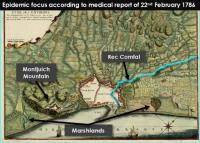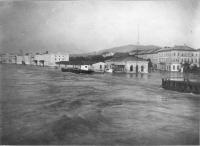Show search results for
"Healthy Country, Unhealthy City: Population Growth, Migration, and Urban Sanitation in Lima and Manila"
This article explores the connection between the significant health improvements made in the developing world, particularly after World War II, and the goal of providing clean water and sanitation services to large urban centers in these countries.
"Environmental Change, Control and Management in Africa"
This study draws on economic and environmental historical approaches to explore the consumption-conservation nexus in the use of African natural resources. It explores environmental changes resulting from a range of interactive factors, including climate, population, disease, vegetation and technology.
Versailles’ Drinking Water and the Last Service of the Marly Machine, 1859–1963
The Machine upgraded by Dufrayer was able to pump the impressive amount of 20,000 m3 per day but new concern threatened its existence: the Seine waters growing pollution.
Marshlands, Sanitation Policies, and Epidemic Fevers in Late-Eighteenth-Century Barcelona (1783–1786)
A tertian fever epidemic occurred in Barcelona from 1783 to 1786 and affected approximately one million people.
Treating the “Undesirable”: Venereal Patients in the Canadian Expeditionary Force, 1914–1918
This paper explores how conceptions of Canada as a naturally healthy environment proved false when the ill-health of civilians was revealed during the First World War.
Mumps in the Post-Secondary Environment: Targeted Advertising in the 2007–2008 Alberta Mumps Vaccination Campaign
In 2007/2008 a gendered ad campaign was used in Alberta, Canada, to encourage post-secondary students to undergo mumps vaccination. This ad campaign can be seen as the result of a confluence of factors unique to a campus environment.
The Overrated Effect of Cholera and Typhoid Fever on Sanitary Reform: The Case of Linz
Cholera and typhoid fever did play a role in sanitary reform in Linz/Donau, but cannot be interpreted as the trigger of these reforms.
The Good, the Bad, and the Ague: Defining Healthful Airs in Early Modern England
Combating malaria through travel, diet, natural remedies, and architecture in early modern England.
To Dig a Well (in Siberia)
In 1947, inhabitants of Yakutsk gained access to potable groundwater from below the permafrost layer for the first time.











